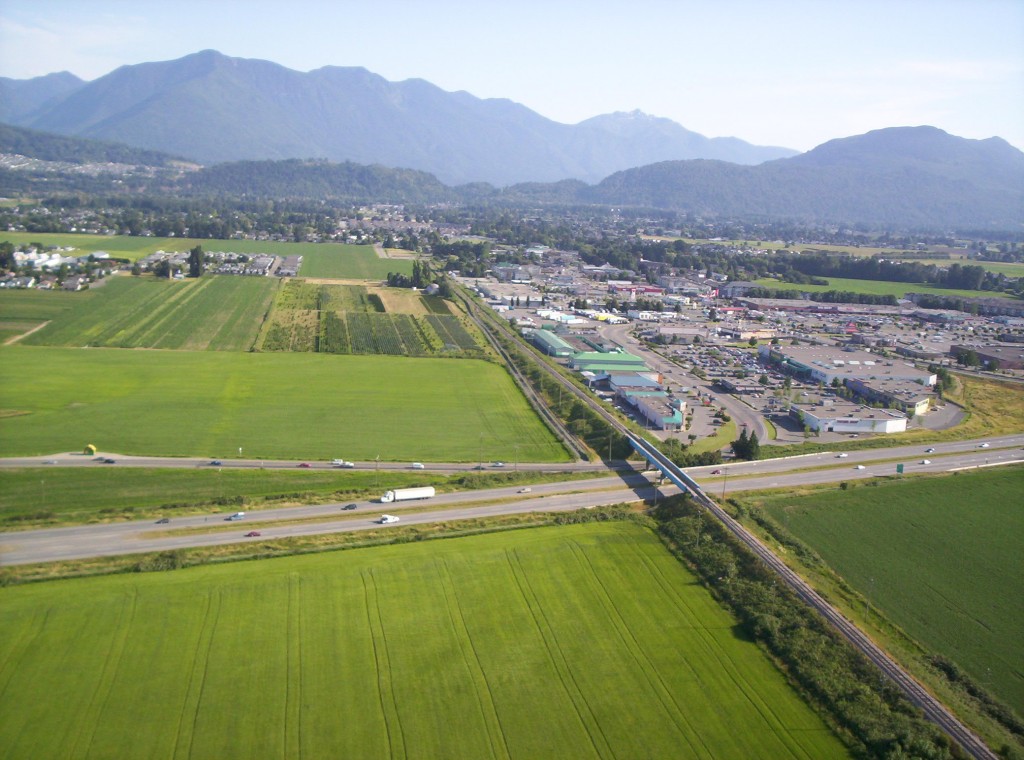The world is urbanizing – over 50% of the world’s population now live in urban areas and that percentage is expected to climb rapidly for the rest of this century – resulting in an extreme level of urbanization of the growing world’s population. Since every person needs to eat every day and the world’s population continues to grow, the scale and implications of the urban food system is more important than ever before in human history as is the imperative to more effectively develop the food and agriculture potential of cities.
Agriculture is only one piece of the food system – While it gets the lion’s share of attention in discussions of the food system, agriculture is actually a small part of the overall economic, cultural and environmental system that connects a field to our table. A significant majority of the value and impact of the food system lies “post-field.” In this case, an approach to urbanity and food systems that focuses on agriculture or urban agriculture is entirely inadequate to address the real issues and opportunities these offer. Agricultural Urbanism was created as a direct response to the past narrow focus of attention in the planning profession on urban agriculture and the issues of development near or on agricultural land. Agricultural Urbanism endeavours to provide information and tools for planners, designers and developers to enhance the entire urban food system while planning and managing urban areas.
The global food system is not about to end – A paranoia about the future of the food system has emerged in popular culture, particularly in alternative or progressive subcultures. While our global food system faces many challenges, several points need to be kept in mind:
- Food is a cornerstone of civilization – Food is so fundamental to life and our economies that we have been and will continue to focus enormous effort on technology and innovation in the global food system – and therefore widespread breakdown of the global food system is highly improbable. This observation is less a statement of blind optimism than one that notes that paranoid pessimism about something as fundamental as our source of food is a poor foundation for public policy.
- Food intensification potential – Our current food supply is based on production methods that are highly wasteful of land. A much greater amount of food can be produced on a small amount of land than is currently widely practiced and significant amounts of the planet still offer major agricultural potential. In addition, with strategic work, major areas of currently damaged soils can be rehabilitated relatively quickly to become productive again. While some regions on the planet may face changing food supply regimes, overall, we can produce a lot more food in a sustainable manner across the world than we are at present.
- Global transport of food – Humans have been growing, storing, trading and transporting food around the world for thousands of years, long before the efficiencies of the industrial revolution emerged. In addition, the global transportation system is not going to vanish and as such, the global food supply regime is not about to collapse. A global food system entirely powered by renewable non-carbon energy sources is entirely within reach today – and as such, the issue of “food miles,” while critically important, is not automatically connected to an impending global environmental crisis as many would have us believe. Food will continue to be easily stored and transported around the world in the future and as such, the economics of comparative advantage will always be with us as we conceive of and develop sustainable urban and regional food systems.
- Managing “food lands” strategically – The value of “agricultural lands” in highly industrialized societies will always be of less value than many other land uses in their urban regions, and as such, a disproportionate focus on only preserving agricultural lands for open field agriculture in these areas is inappropriate. Agricultural land must be preserved everywhere but not blindly so – these metropolitan lands need to be reframed as “food lands” and a much broader range of food uses allowed to optimize their economic, social and environmental performance in major metropolitan regions. The preservation of field agricultural land in every city is not an imperative for survival.
- Diversity in regional roles and strategies – In a perpetual global food system, not every city or region will have the same template for a sustainable food system. Highly industrialized cities and regions need to better understand their tertiary role in the food system and manage their land and regional food system to work with what it is optimum to focus on in their food system. For many world cities, this may mean focusing on optimizing some elements of the food system and paying less attention to others. As such, many urban regions should focus on other aspects besides raw food agriculture – including the majority of the other elements in the food system where a major percentage of the value and environmental impact occur, rather than pretending they can or there is virtue in trying to preserve enough raw agricultural land to become food self-sufficient.
- The Agricultural Urbanism perspective – Agricultural Urbanism endeavours to minimize environmental impact while maximizing the economic and social value of the food system in cities. The urban food system offers enormous opportunities to be a major source of jobs, culture, investment, reduced emissions, reduced waste, renewable energy, greater health, and many other benefits. The current approach to planning and development is largely unaware of the opportunities present in a metro region’s food system. In order to achieve the goal of a rich and sustainable food system, the food system must be included as a major element in planning, design and development work – it won’t incorporate itself automatically. Providing tools to identify and claim the enormous opportunity that the food system offers cities is the mandate of Agricultural Urbanism.
